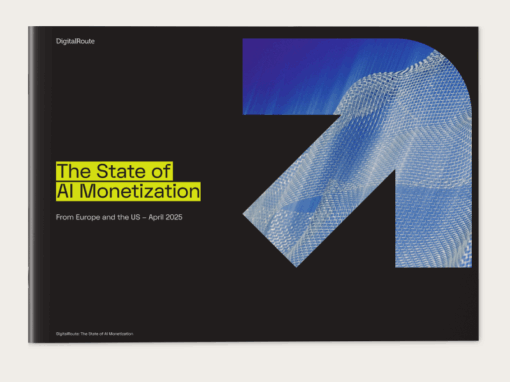Quickfire Usage-Based Pricing Model Implementation and Best Practices
While this won’t be a comprehensive step-by-step guide, it should provide a frame of reference for deploying usage-based pricing (UBP) in your SaaS business. The specifics for implementation will vary by your product or service, maturity level, and target audience, therefore you should tailor these general guidelines for your unique business circumstances.
Define the Following
1. Business objectives and value metrics
Customer retention, increased revenue, market expansion, service optimization, etc. Whichever business objectives you choose to achieve through UBP, they will be guiding your pricing strategies.
2. Target audience and customer segments
Understand your customers’ needs, pain points, or even their inner narratives, because UBP may not be suitable for all customer segments and revenue pockets.
Create personas and archetypes for each customer segment based on their usage patterns and behavior to better understand their needs and motivations. Optimize your pricing strategies accordingly.
3. Suitable pricing structure options and combinations
Explore the different UBP variations, such as pay-as-you-go, tiered pricing, volume pricing, overage pricing, or hybrid pricing, and choose one or combinations that align with your business objectives and customer preferences.
4. New product development or product adaptation
Assess whether your UBP program requires you to develop new products or features or is it requiring the adaptation and optimization of existing ones. Make sure that your product roadmap is drawn out.
Investigate the Following
Market demands and trends
Understand the current and future demands on your industry and market. Are customer behavior and preferences leaning more towards UBP?
Competitors’ pricing strategies
Are your competitors emphasizing on features, affordability, or outcomes? How are they pricing for them? At which point in the product journey did they adopt UBP? Can you spot any gaps or opportunities that they may have missed?
Regulatory compliance requirements
Check into regulatory compliance requirements and industry standards that are relevant to your offerings, region(s) of operation, and technology infrastructure.
Look into regulations related to data privacy, payments, foreign market transactions, encryption standards, etc.
Long-term viability
What is the customer adoption rate for UBP in your segment in the market? What does the market saturation look like now. Will UBP remain relevant as your business and the market evolves?
Cost analysis
What are the financial implications of implementing or adding UBP in your business? What is the potential ROI? How does this affect your partner ecosystem?
Tech stack considerations
Assess your existing tech infrastructure and determine whether any upgrades are needed to support UBP, which might include billing, CMS, integration, and data management systems.
Choose a tech infrastructure that is built-to-scale and can handle data complexity from the start, otherwise, you might prematurely end up having yet another legacy tool in the architecture that is underperforming and choking under pressure.
Opt for automated processes from the start or revenue will start leaking right away. Don’t allow the cost for constant upgrades and modifications to pile up.
Roll Out the Following
Communication, feedback, and reporting mechanisms
Inform your customers (and business partners) about the planned transition to UBP, its benefits, and how it will affect them.
Make your customers’ usage data transparent to them (in real-time, if possible). Subscriptions is an always-on business model so make sure you are able to respond to customer demand in real-time.
Set up your products and services to track customer usage and other relevant metrics so you can make informed strategic decisions related to pricing, user experience, service optimizations, etc.
Pilot UBP program
Select your most viable product for UBP and launch it to a smaller group or market.
Gather feedback and fine-tune your pricing structure, metering methods, etc. accordingly.
Product or service assessment
Consider developing features that encourage increased usage and engagement so you can evaluate and re-evaluate how UBP is impacting your offerings.
Data privacy and security
Define strict protocols for collecting, storing, and processing usage data immediately. Make sure you have full audit control on a transaction level in the event of any disputes, settlements, and compliance issues.
Continuous improvement framework
Assemble a framework for continuous improvement where you regularly analyze the collected data from UBP.
Contingency plans
Establish contingency plans for potential disruptions (both positive and negative ones) or challenges. Disruptions could be associated with customers, the markets and industries, or technical issues.
Usage-Based Pricing Model Implementation:
Data Challenges and Solutions
Now that you have the basic framework for implementing a usage-based pricing model, recognizing the central significance of data is crucial. The success of such a model hinges on the efficient management, processing, and analysis of usage data related to user engagements and associated metrics. Let us explore in detail the most common data challenges that may arise and discuss potential solutions to navigate them seamlessly.
Increasing volume
According to Statista, the volume of data created, captured, copied, and consumed worldwide will reach 147 zettabytes by 2024. Considering that back in 2020, that figure was only at 64.2 ZB, it’s clear that the role of data in driving innovation and shaping new business models has become paramount.
The challenge lies in the constant need to efficiently capture and process immense volumes of usage data. If you have a product-led growth (PLG) strategy in place and have experienced an influx of activations and usage, then you already understand how all that data could pile up.
Every single time a customer engages with your software, a string of data events is captured. Not to mention all the events generated by backend processes. At some point, all of that information will be beyond the processing capacity of traditional billing systems. As data is arriving faster and in higher quantities, the demand for near real-time to real-time processing are choking systems that aren’t fit-for-purpose.
Choose solutions that have scalable infrastructures and have robust capabilities in compressing, partitioning, archiving, purging, sharding, and deduplicating usage data.
Multiple data sources and formats
SaaS companies that offer a range of services often collaborate with partners to expand their own offerings to reach new markets. Each partner interaction usually ushers in a multitude of data sources, each with its own distinct format.
For example, a video streaming company that have partnered with a handful of providers (e.g. film studios, TV networks, independent creators), will most likely deal with a variety of data sets that might include streaming protocols, metadata, licenses, etc. The same film that’s categorized as simply “Suspense” by one provider might be labelled as a more refined “Surrealist drama” by another.
If the incoming data isn’t structured and unified, generating personalized recommendations can be a challenge, which could affect customer experience and revenue generation.
To fix and/or prevent this, you will be needing solutions that have the capabilities to perform data integration, aggregation, transformation, and normalization. Your APIs need to be standardized and all the metadata need to be managed.
Dirty data
The challenges with data go beyond its sheer volume. Quality is a concern as well.
As mentioned earlier, your company is probably sitting on a lot of data and it keeps pouring in. The usage data being collected is the foundation for gaining insights in user behavior, preferences, pain points, and a lot more. Inaccurate and/or invalidated usage data can lead to misguided decisions and missed opportunities.
Imagine an eLearning platform that charges its users on the number of courses accessed and the time spent on each one. Inaccurate usage data can lead to inaccurate billing, which then leads to revenue loss and dissatisfied customers. It could also distort learning analytics that assesses the effectiveness of the courses, and recommending additional courses based on the users’ usage data may not be as accurate and personalized as it should be.
As information pours in from multiple sources, it’s imperative that a meticulous process of cleaning, analyzing, and validating is carried out to render the data truly meaningful and valuable. Consider solutions that automate such processes. Real-time data validation and auditing also helps profile, correct, and enrich data as it is ingested.
Real-time processing
The demand for real-time processing of usage data is critical in a modern business landscape. Usage data must be precisely attributed to the appropriate customer accounts and exemptions. It’s not just a technical necessity but also a strategic imperative. This real-time accuracy is particularly crucial when considering billing systems that operate based on usage.
A SaaS parking solution, for instance, would track metrics such as the parking duration, parking rates based on location, demand, time of day, etc. If a customer’s usage isn’t processed in real-time, the company’s platform wouldn’t be able to accurately display the accrued parking fees so far, nor would it be able to send notifications or reminders as the customer’s parking time approaches expiration.
Customers relying on this model expect transparency and responsiveness regarding their consumption patterns and associated costs. This real-time visibility empowers customers to make informed decisions about their usage behavior, fostering a sense of control and trust in your services.
Real-time processing means high volumes and complex streams of data coming in at high velocity, which can strain systems. You will need to invest in a data management solution that can scale independently so it can allocate resources or distribute the workloads dynamically when managing fluctuations in usage.
Precision and sequencing
Every single transactional data = revenue. When data arrives out of order, it introduces a complex puzzle where records can become obscured or even omitted, resulting in detrimental consequences such as erroneous billing, revenue leakage, and customer dissatisfaction.
This intricate sequencing process is akin to piecing together a puzzle – each data point needs to find its rightful place within the larger context to ensure the overall picture remains accurate and coherent.
In scenarios involving collaborative services with partners, the requirement for accuracy amplifies. A robust audit trail is essential to maintain revenue-sharing precision among partners, warranting that each entity receives its rightful portion based on accurately recorded data. The efficacy of these collaborations hinges on data precision as it not only ensures fair revenue distribution but also averts potential disputes and discrepancies.
Make sure to implement robust data validation practices (or better yet, automated data validation) that enforces your predefined rules. Ensure that all systems involved use synchronized timestamps to ensure that data events are processed in the right order.
Legacy IT
Complicating the already intricate landscape of data challenges is the intricate network of middleware and legacy IT infrastructure – amalgamations of internally developed solutions, systems procured from diverse providers, and IT frameworks assimilated through acquisitions – all mixed in with more modern IT solutions.
The capacity of these systems hinges on the integration and interpretation of data records. In this context, the uniformity of data attributes tied to individual customers becomes pivotal. Manual handoffs between these systems can result in data leakage, fragmentation, and even obsolescence by the time it reaches the billing system.
Good news is that you do not need to do a complete overhaul of your IT architecture. Try a gradual migration where you identify specific components that can be modernized incrementally. When reconfiguring your systems and integrating more modern solutions, consider ones that automate the data exchange between legacy and modern systems, and standardizes/normalizes the data.
Conclusion
Implementing UBP requires careful planning and consideration of several factors. Businesses should define their business objectives, target audiences, pricing structures, and product development strategies. Research into market demands, competitor pricing strategies, regulatory requirements, long-term viability, costs, and technology considerations is crucial to ensure successful implementation.
Rolling out UBP involves effective communication with customers and partners, launching a pilot UBP program, continuous product or service assessment, and stringent data privacy and security measures. A continuous improvement framework and contingency plans are essential for adapting to disruptions and challenges that may arise during the UBP journey.
However, despite its undeniable benefits, UBP introduces significant data challenges. Managing the increasing volume of data efficiently, dealing with multiple data sources and formats, ensuring data quality, achieving real-time processing, maintaining data precision and sequencing, and integrating legacy IT systems are formidable tasks. Solutions like scalable infrastructure, data integration tools, automated data validation, real-time processing capabilities, and modernization strategies can help overcome these challenges.








